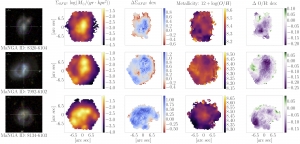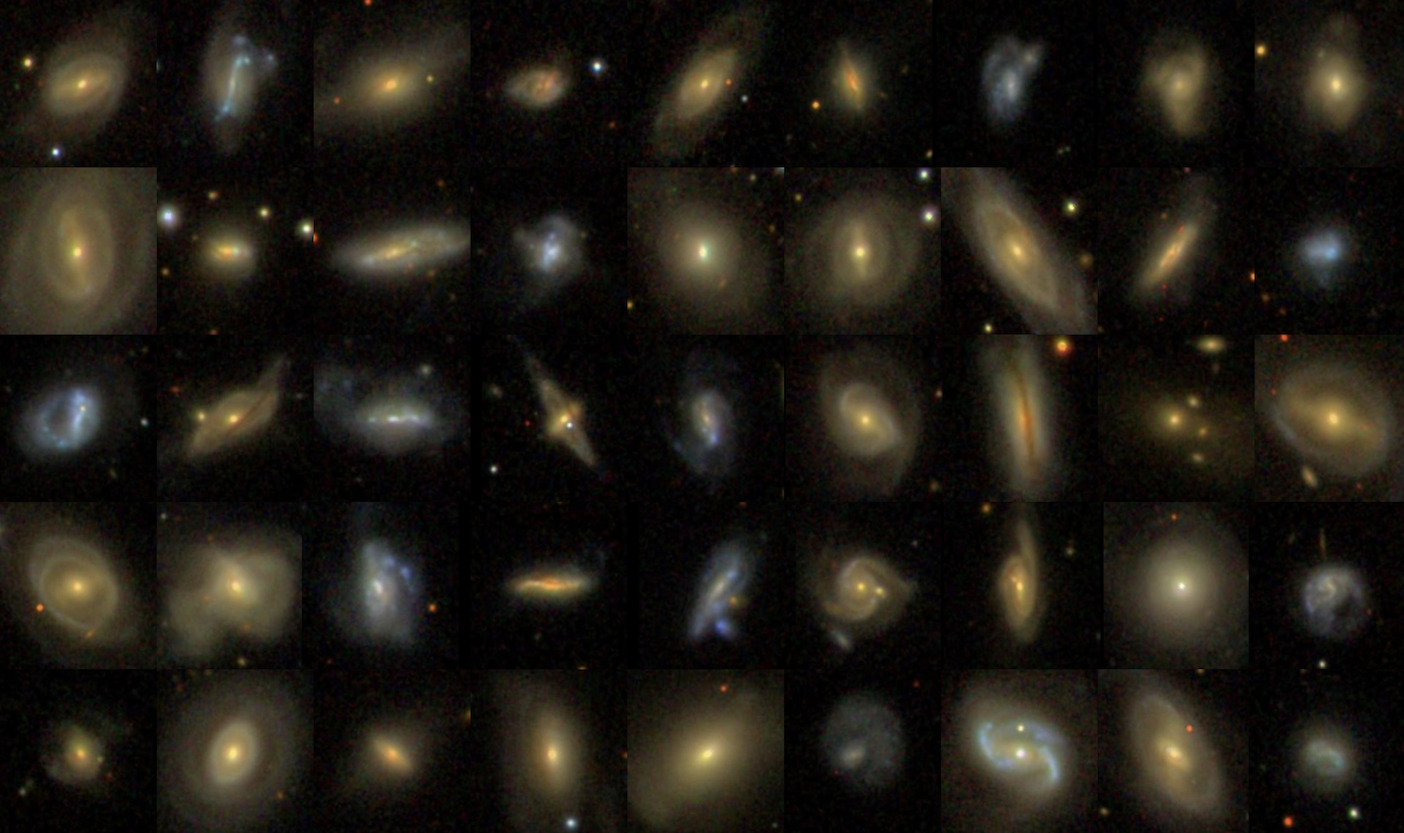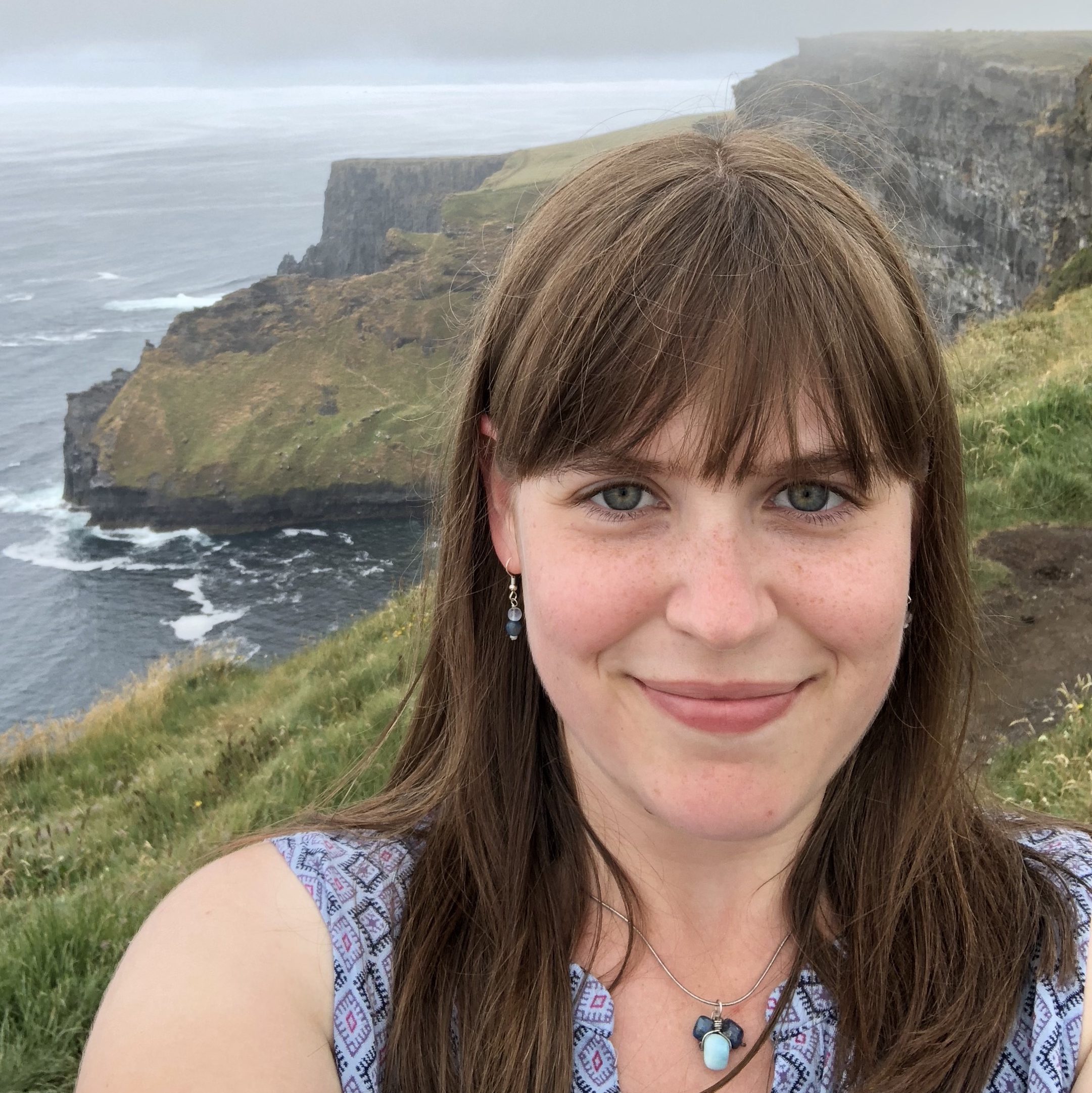Research
My main research interest is understanding how galaxies have evolved into their current state, in particular how galaxy mergers have shaped that evolution. Interactions between two galaxies of a similar mass drastically alter the star-formation activity, chemical composition, morphology, and central black-hole accretion of galaxies. Our current interpretation of the universe leads us to believe that galaxies may form hierarchically through interactions. My research explore how the spatially resolved properties of merging galaxies differ from those which are undisturbed.

SDSS gri – images of galaxies undergoing different stages of an interaction. Image credit: www.sdss.org
Given the rarity of merging events in the local universe, observational studies of galaxy mergers are dependent on massive surveys to collect a sufficient sample of galaxy mergers. Interaction events can last hundreds of millions of years, so to reconstruct the merging process I also need a large sample to collect galaxies at different interaction stages (see above). Until recently such surveys were limited to a single spectrum collected for each galaxy, overlooking the non-uniform effects of mergers over a range of internal spatial scales.
Studying Mergers with Large Spatially Resolved Surveys
My current research utilizes integral field spectroscopy (IFS), where spectral information is collected across a galaxy’s surface, to quantify the spatial changes in a galaxy as a result of an interaction. I analyze maps of star-formation and metallicity for merging galaxies I’ve identified in the Mapping Nearby Galaxies at Apache Point Observatory (MaNGA) Survey, and IFS survey which contains over 10,000 galaxies. Using well established relationships between star-formation rate surface density, metallicity, and stellar mass surface density, I then measure the offsets in star formation rate (ΔΣSFR) and metallicity (ΔO/H) for merging galaxies with respect to the general star-forming population.

An example of ΔΣSFR and ΔO/H maps for three post-merger galaxies, derived from PIPE3D dataproducts. MaNGA reveals greater variety in the spatial distribution of the star-formation enhancement and metallicity suppression than expected for post-merger galaxies, particularly in the galaxy outskirts. Published in MNRAS.
ALMaQUEST: What powers interaction induced bursts of star formation?
I have recently expanded my work to investigate the molecular gas properties of merging galaxies, and the connection between gas and star formation during an interaction. The ALMaQUEST survey combines new molecular gas observations (derived from CO) from the Atacama Large Millimeter Array with stellar mass and star formation rate information from MaNGA to investigate star formation evolution for a variety of galaxy types.
I served as a co-investigator on an ALMaQUEST follow-up program targeting galaxy mergers in particular, and have used these observations to investigate what powers merger induced enhancement in star formation: an excess of gas to fuel stellar growth? Or an enhanced efficiency at which gas in converted into stars? Published in MNRAS Thorp et al. 2023.

